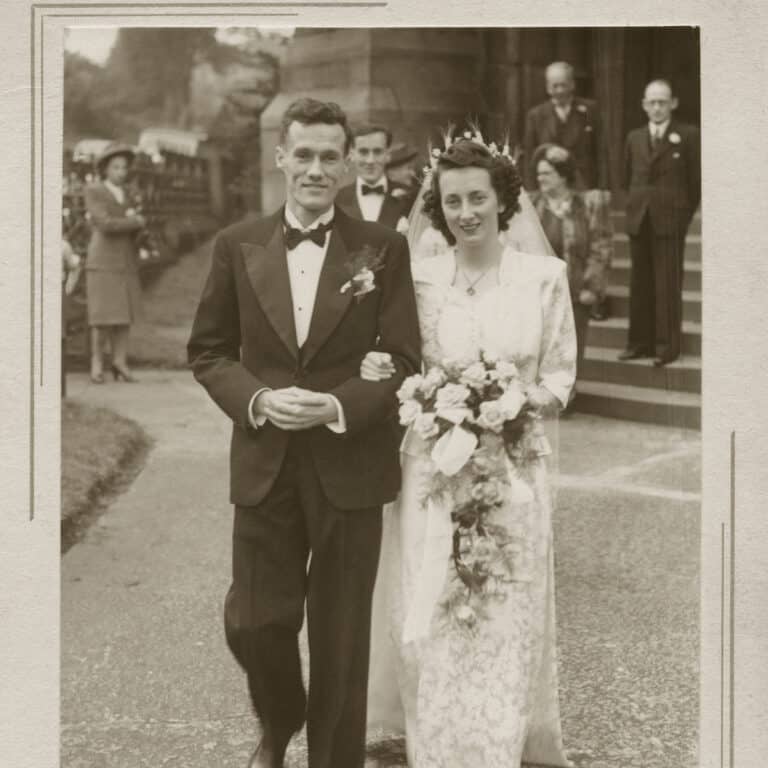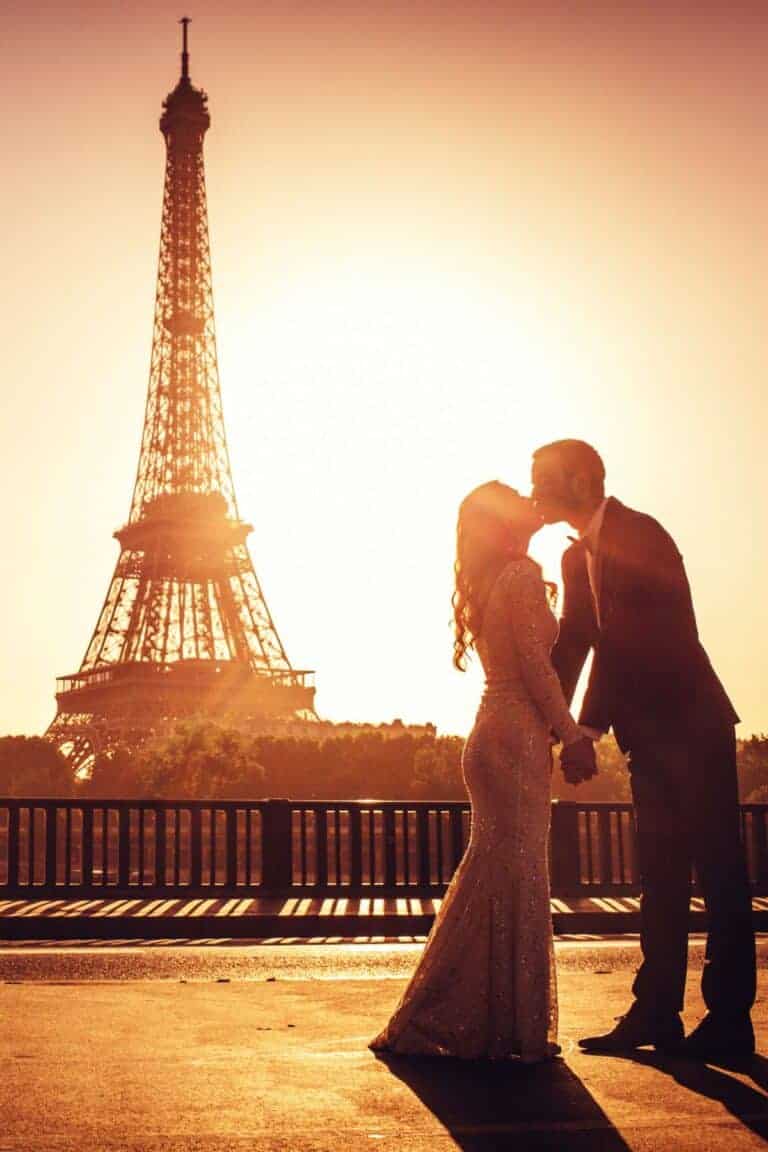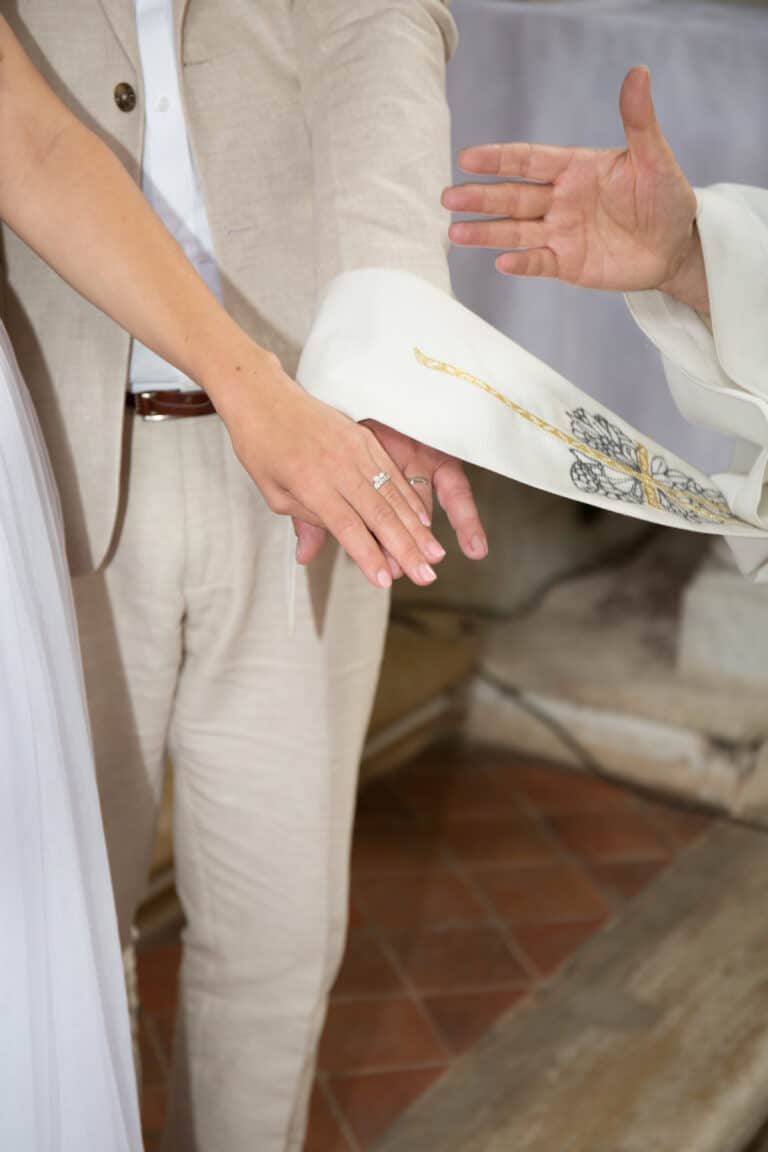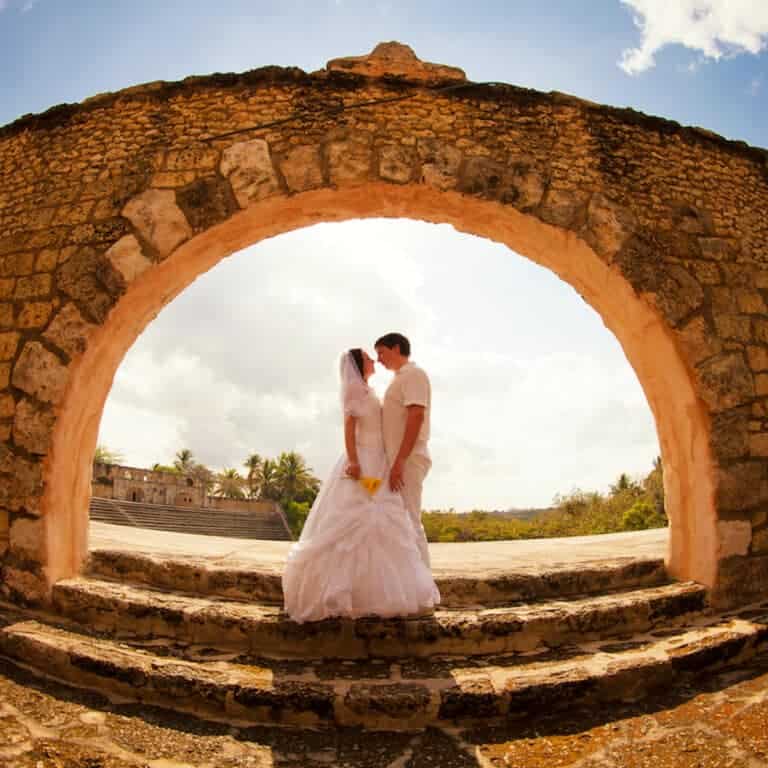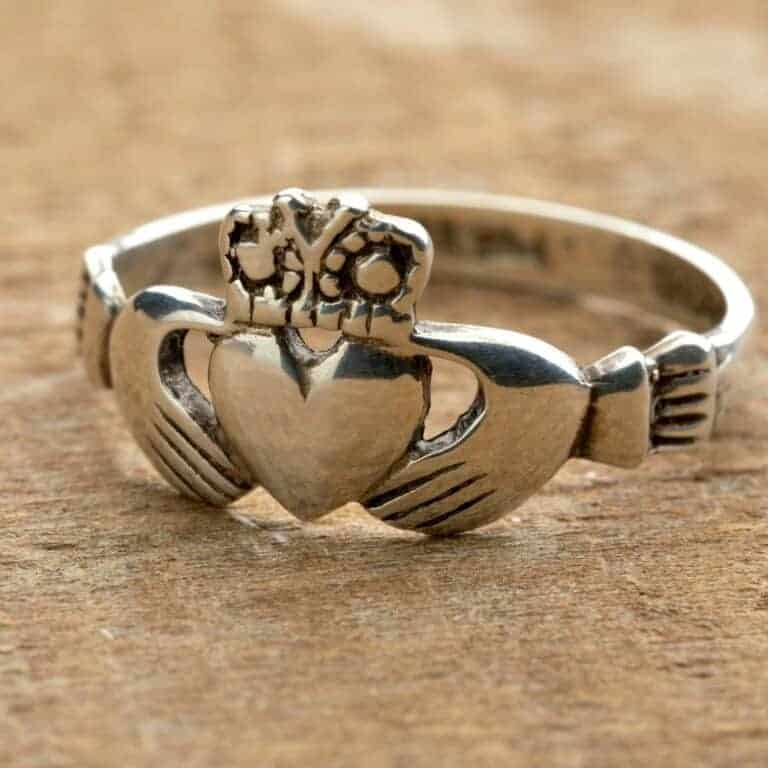Moroccan Wedding Traditions
Moroccan wedding traditions blend ancient Berber, Islamic, and African customs passed down from generation to generation. Morocco is steeped in history and cultural richness, and its wedding traditions are no exception. From intricate henna designs to a parade of musicians and dancers, Moroccan weddings are extravagant affairs filled with vibrant colors, music, and laughter.
Before any wedding celebrations begin, the actual wedding ceremony must happen, where the couple signs their marriage contract to declare them legally married.
The wedding process can last for several days, with the bride and groom each hosting separate events. On the wedding day, the bride and groom are typically adorned in traditional Moroccan attire, with outfit changes during the day.

A dowry
In Morocco, a wedding tradition often involves a dowry. This is a gift the groom gives to the bride’s family. The dowry is known as “Mahr” in Arabic. It symbolizes the groom’s commitment to the bride and is usually paid in cash, gold or jewelry. Payment of the dowry can vary greatly, depending on the financial means of the groom’s family, and may be negotiated between the two families.
The dowry symbolizes the groom’s ability to provide for the bride and is seen as a show of his respect for her and her family. It is also considered a protection for the bride. The dowry can be used in case of divorce or the death of the groom.
It is worth noting that while the dowry is a traditional aspect of Moroccan weddings, its significance and importance can vary among different communities and families. Some may consider it to be an outdated practice, while others may hold it as an important part of their cultural heritage. Ultimately, the decision to include a dowry in a Moroccan wedding is a personal one and can vary greatly depending on the couple’s preferences and beliefs.
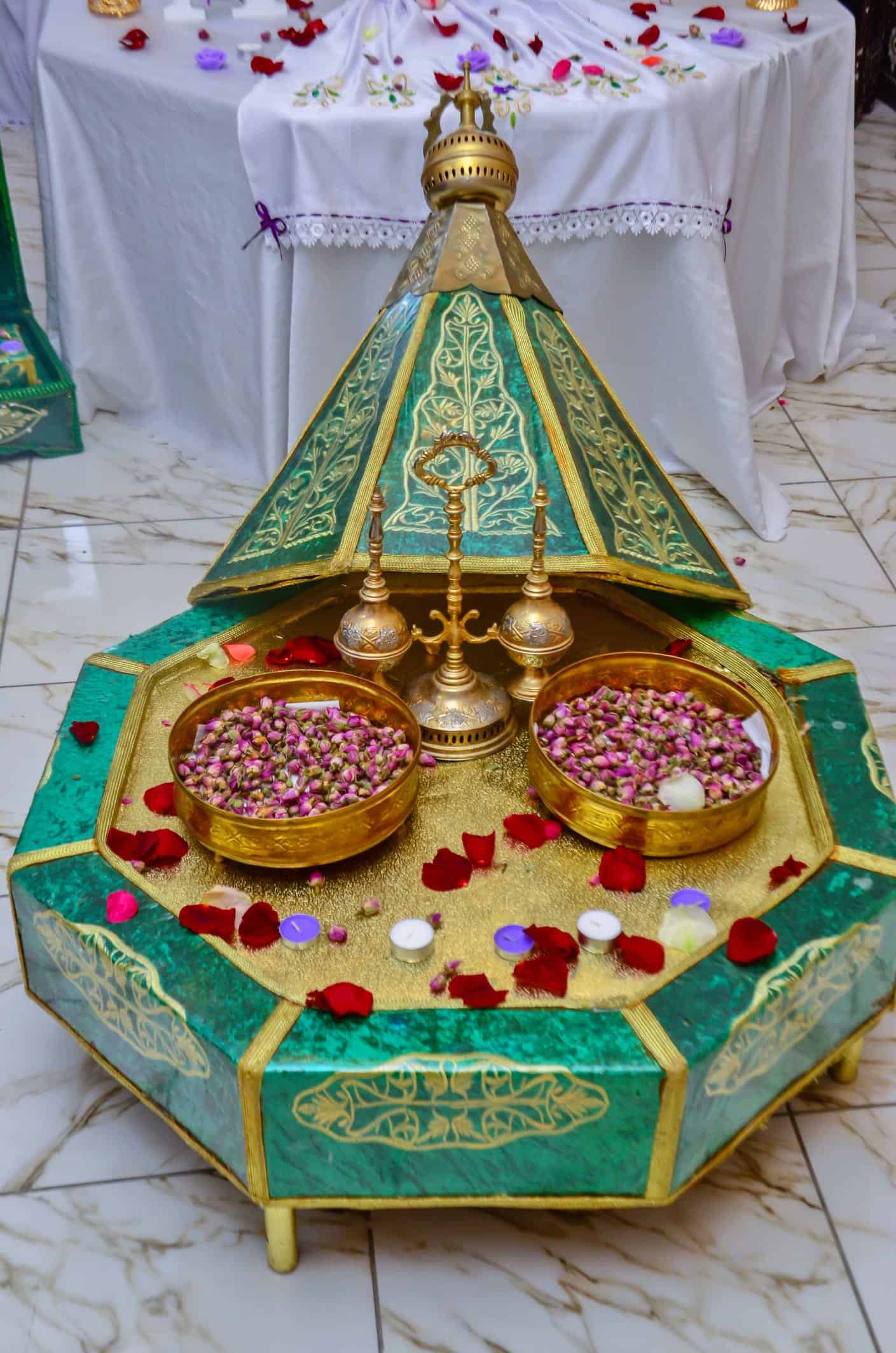
Furnishing Party
The Furnishing Party is a traditional pre-wedding celebration in Moroccan culture. It is an event where the groom and his family bring gifts and household items to the bride’s family to help furnish the couple’s new home.
The gifts may include items such as linens, kitchenware, and furniture and symbolize the groom’s commitment to providing for his bride and future family.
Drib Sdak – Wedding ceremony
The Drib Sdak is the marriage ceremony when the bride and groom sign their marriage contract. This must take place before any wedding celebrations can.
They sign the contract in the presence of close family members and an Adoul. Adouls are authorized representatives of Morocco and are responsible for performing the wedding ceremony and registering the marriage. The Adoul acts as a mediator between the bride and groom and ensures that the wedding is conducted according to Islamic law.
This is both religiously and officially binding. After this, the wedding celebrations can begin!
Hammam Day
On the first day of the wedding celebrations, it is Hammam day.
A hammam is a traditional sauna. The bride visits with her female friends and relatives to prepare for married life. During this day, the bride and her female family members and friends will spend the day at the hammam, having a traditional milk bath, skin exfoliation, massages, and various beauty treatments.
Hammam Day is also a time for the bride and her female friends and family to bond and share stories, jokes, and advice. It is a relaxing and rejuvenating experience that is considered essential to the pre-wedding festivities.
Henna Party Celebrations
The next day the bride and woman of the family gather for henna day celebrations. This is an integral part of Moroccan wedding preparations. A henna artist will paint the hands and feet of the bride and her close friends. Henna is a natural dye made from the henna plant’s leaves. It’s used to create temporary tattoos that are believed to bring good luck and happiness.
The henna designs are usually intricate and can take hours to apply. The process is considered to be a relaxing and enjoyable experience.
During Henna Day, the bride’s hand and feet will typically have a unique and more elaborate design applied. This symbolizes her beauty and happiness. The henna designs are often accompanied by music and dance, adding to the festive atmosphere of the celebration.
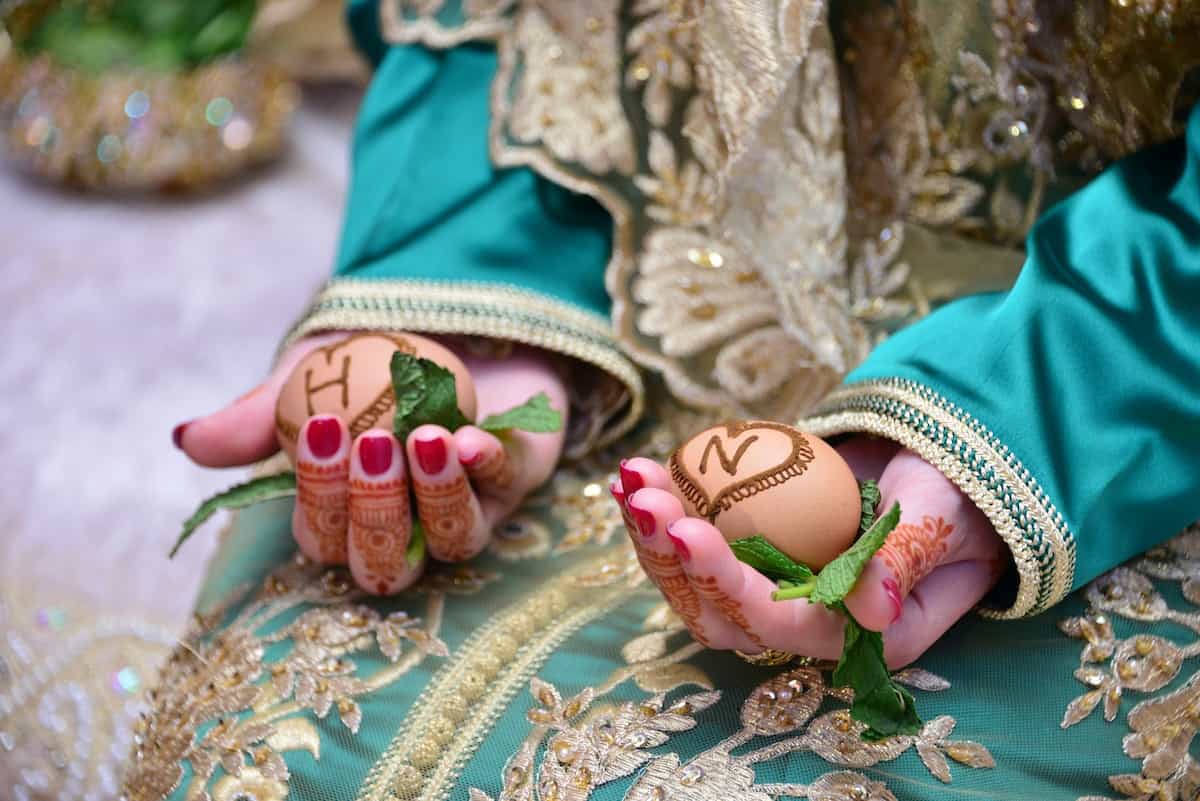
The wedding day
The primary wedding celebration day is a beautiful affair. The wedding venue could be at house or at a rented large room, depending on the number of guests.
The guests arrive first and await the bride and groom’s arrival. While they wait, there is often mint tea and sweets served.
The bride traditionally arrives last. Usually, inside an “Amaria”, an elegant roofed platform made of wood carried on the shoulders of 4-6 men. She comes accompanied by the “Neggafate”, a group of female attendants hired by the family. They help the bride change clothes during the various stages of the celebration.
Traditional Moroccan music is played as the happy couple enters the room and they are danced through the room to the clapping and singing of guests.
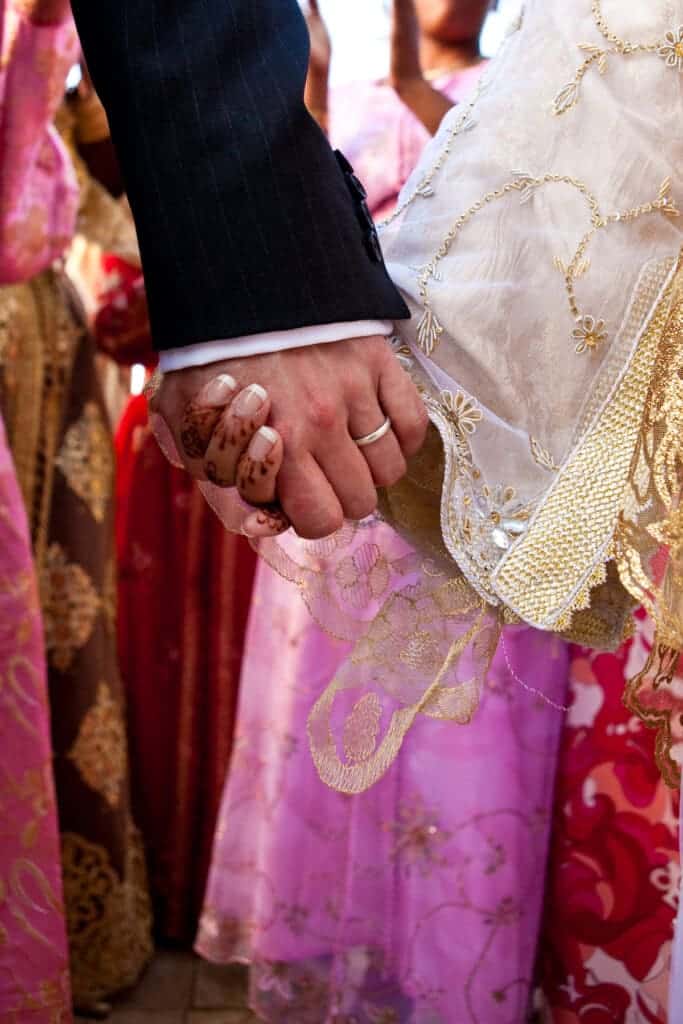
The outfits
A bride at a Moroccan wedding traditionally has up to 7 outfits during the wedding celebrations. These days, it is usually less than 7, but a few outfit changes are still involved. The moroccan dresses worn differ greatly depending on the region of Morocco.
Outfits for the bride
- Green caftan – a beautiful green caftan is traditionally worn at the henna day.
- A white takchita (or takshita) – This is similar to a white kaftan but more intricate. It’s made up of 2 or more pieces. The part underneath is the tahtiya which is like a caftan. The second part on the top half is the fouqia/or dfina. This part is often decorated with intricate designs, embroidery, beadwork, and other embellishments. Usually Takchitas are brightly colored, but the bride wears a white dress for the beginning of the wedding ceremony.
- Labssa fassia – A stunning and full-on dress that covers the bride right up to her face.
- Lebsa lfasiya – This is the traditional dress from the Fez region of Morocco. It’s a very intricate dress that comes in a few parts, including a spectacular head dress.
- R’batia – Woman from the city Rabat where this caftan, commonly in the color blue.
- Soussia dress – Worn by a woman from the Souss and Amazigh regions. The dress is accompanied by luxurious hairstyles and jewelry. The jewelry is often unique and handmade from silver, enamel, pearls, and shells.
Outfits for the groom
The groom only has two to three outfit changes during the celebrations. There are the traditional outfits, though these days suits are commonly worn too.
- Jabador – A traditional Moroccan outfit that consists of a tunic and pants, made of lightweight, breathable fabric. It is a casual and comfortable garment.
- Selham- A traditional Moroccan cloak.
- Djellaba – A a traditional Moroccan hooded gown that is worn by both men and women. It is made of a loose-fitting fabric draped over the body, typically worn with a belt at the waist.
Moroccan wedding food
Food is an important part of Moroccan wedding celebrations. There are a wide variety of traditional dishes that are often served at these events. Some of the most common dishes that are enjoyed at Moroccan weddings include:
- Tajine: This slow-cooked stew is made with meat (typically chicken or lamb), vegetables, and spices, and is traditionally cooked in a clay pot.
- Couscous: This staple grain dish is a must-have at any Moroccan wedding. It is usually served with a variety of meats, vegetables, and spices, and is a filling and flavorful dish that is enjoyed by all.
- Harira: This hearty soup is made with lentils, chickpeas, and spices, and is a popular dish during weddings and special events.
- Bstilla: This savory pastry is made with layers of thin phyllo dough, spiced meat (chicken or pigeon), and almonds, and is often served as an appetizer or main dish.
- Mechoui: This traditional dish consists of a whole roasted lamb that is served with a variety of sides, such as vegetables, bread, and spices.
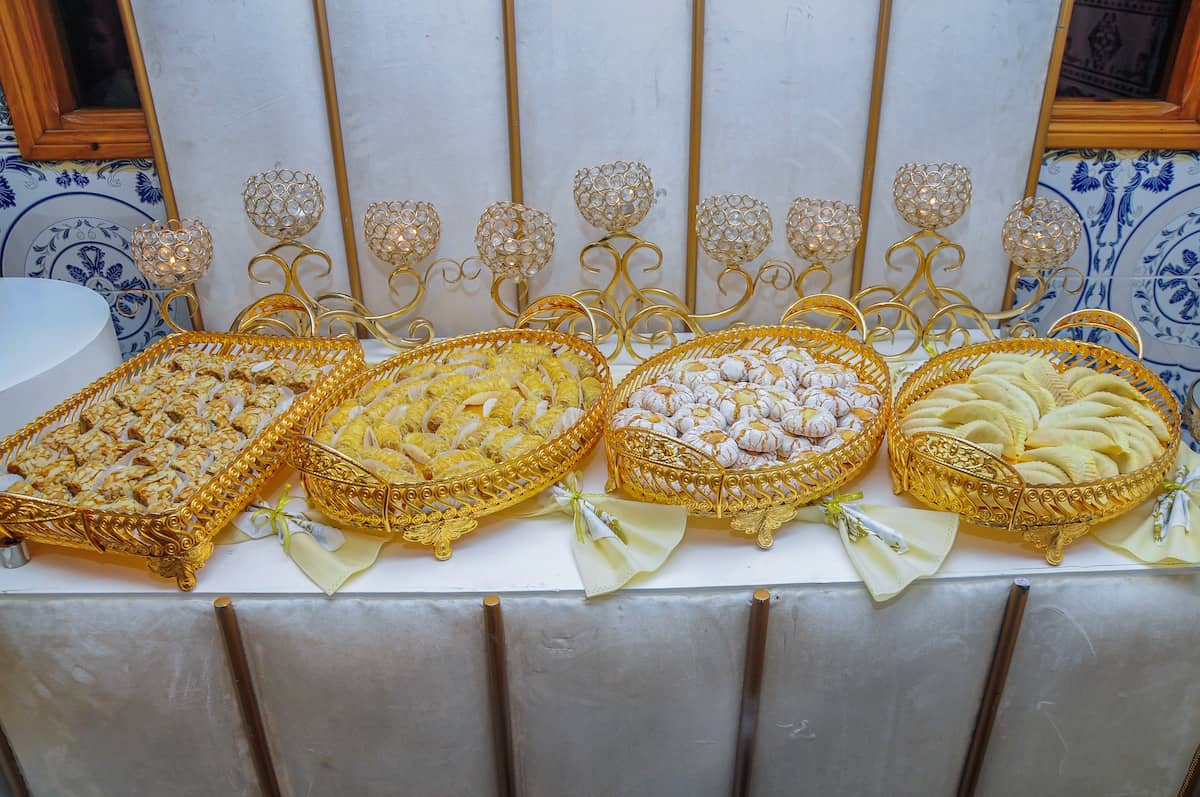
Moroccan weddings are a vibrant and joyful celebration of love and commitment. They are rich with tradition, symbolism, and meaningful cultural rituals deeply rooted in the country’s history and heritage.
From the pre-wedding celebrations like Hammam Day and Henna Day to the formal wedding ceremony and the traditional wedding feast, Moroccan weddings are a vibrant display of the love and joy surrounding the newlyweds and their families.

